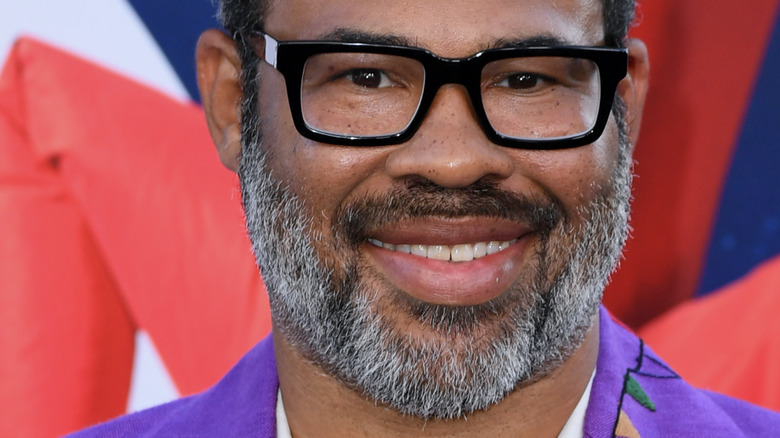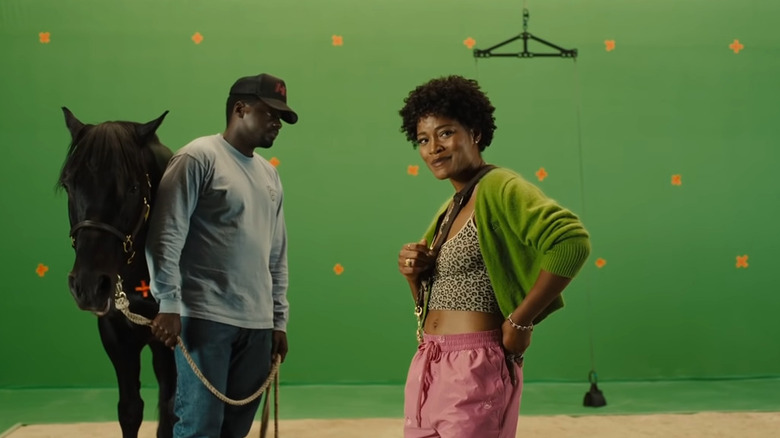The Shocking Criminal History Of The Real-Life Historical Figure Featured In Nope
In the trailer and opening credits of Jordan Peele's horror film "Nope," there's a scene in which Emerald 'Em' Haywood (Keke Palmer) is making a commercial while her brother, OJ Haywood (Daniel Kaluuya) looks on. Em asks the camera, "Did you know that the very first assembly of photographs to create a motion picture was a two-second clip of a Black man on a horse?" She then explains that the man was her great-great-great-grandfather, who was also the founder of their business, "Haywood Hollywood Horses." While Haywood's claim is fictional, the film "Horse in Motion" is considered one of the first successful examples of using a sequence of photos to show motion — a motion picture (via The Franklin Institute).
"Horse in Motion" is credited to Eadweard Muybridge, who was born Edward James Muggeridge, and came to the United States from England in 1852. In 1860, Muybridge was involved in a stagecoach accident that nearly killed him. The stagecoach hit a tree and Muybridge was thrown out, and he smashed his head on a boulder. His injuries from the accident would be used in his murder defense fourteen years later, while he was creating a new photographic setup to capture motion (McAlester News-Capital).
Eadweard Muybridge killed his wife's lover
1872 was notable for 42-year-old Eadweard Muybridge as it was the year he began working with Leland Stanford to show motion in photos, and also the year he married 21-year-old Flora Stone. Stone was alone a lot while Muybridge traveled for photography jobs and began having an affair with a man named Harry Larkyns. In 1974, a child was born to Stone and Muybridge. When he went to settle the bill with the midwife, he discovered a photo of their child with the words "Little Harry" written by his wife on the back. Needless to say, Muybridge went ballistic (via Muybridge in Motion: Travels in Art, Psychology and Neurology). He tracked Larkyns down, and when he opened the door, Muybridge said, "I am Muybridge and this is a message from my wife," and proceeded to shoot Larkyns dead.
Muybridge cited insanity due to his head injury from the stagecoach incident, with many sworn testimonies from those who knew him saying he was a different person after the accident. "Frontal-lobe injury usually leaves the intellect intact, University of California Berkeley psychologist Arthur Shimamura told Stanford Magazine, "but when provoked or aroused, Muybridge would have been unable to keep his emotions in check." Despite the judge in the case instructing the jury that an adulterous relationship was not an acceptable reason for murder, the jury acquitted Muybridge on the ground that he was justified in killing Larkyns for seducing his wife.
After going into seclusion for a short time, Muybridge resumed his photography work for Stanford in 1877 and finally got the motion shot Stanford was seeking: "Horse in Motion." Few people nowadays know that the creator of the first motion picture is also a murderer.

